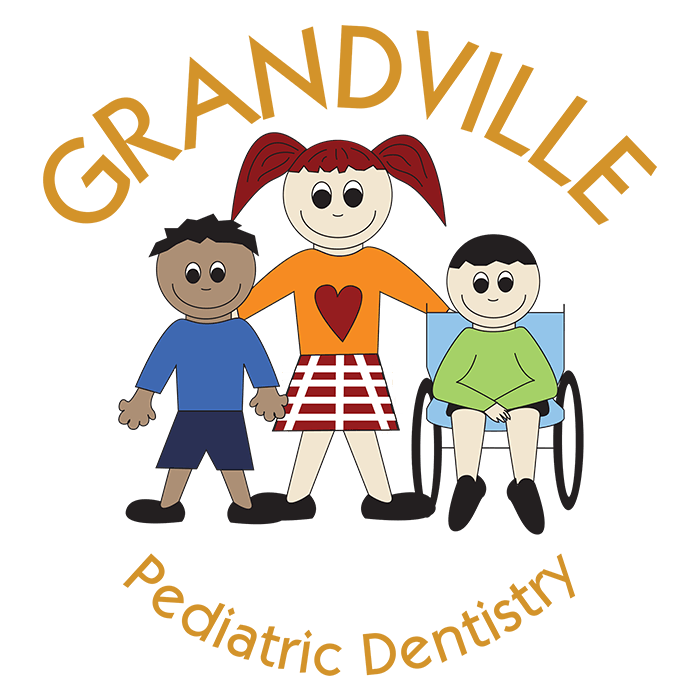What to Do for 8 Different Dental Emergencies

If your child is experiencing a dental emergency, timing is critical. Don’t delay in seeking emergency dental care from our Grandville, MI, pediatric dentists as a quick response can mean the difference between losing and saving a tooth.
Keep in mind, however, that the term “dental emergency” encompasses multiple scenarios. There are different steps you should take depending on what kind of dental emergency your child is experiencing. For example, some situations require an immediate visit to our dentists; others, however, require an immediate visit to the nearest emergency room.
Let’s look at 8 so you will know what to do in case something happens. If you have any questions or doubts, don’t hesitate to call our Grandville pediatric dental office for more information.
1. Toothache
Your child may be experiencing a toothache for a few different reasons. It could be an overlooked cavity that needs treatment, a cracked tooth, or an infection in the form of a dental abscess. Regardless, tooth sensitivity and pain should be addressed at home and more closely by our team of dentists.
While you’re waiting to be seen, clean around the sore tooth meticulously. Using warm salt water, rinse the mouth to displace any food trapped between teeth. Flossing may also help dislodge debris that is stuck.
UNDER NO CIRCUMSTANCES should you use aspirin on the aching tooth or on the gum. In the event of facial swelling, apply a cold compress wrapped in a thin washcloth or small towel to the area. For temporary pain relief, acetaminophen is recommended but do please try to see our dentists as soon as possible.
2. Cut or Bitten Tongue, Lip, or Cheek
If your child has managed to injure or accidentally bite their tongue, lip, or cheek, don’t panic. For any bruised or swollen areas, apply ice or a cold compress for 15-20 minutes at a time. For bleeding, apply firm (but gentle) pressure with sterile gauze or a clean cloth. If the bleeding does not stop with pressure or continues after 15 minutes, go to the nearest emergency room.
Your child may require stitches if the cut or open wound is severe enough. For example, if the cut continues through the lip or across the tongue’s edge.
3. Broken Braces and Wires
While our pediatric dentists can do their best to assist and provide support, most orthodontic issues are best resolved by your child’s orthodontist. Keeping this in mind, remove any broken appliances only if they come out easily. If it’s lodged or painful to take out, cover any protruding edges with wax, cotton balls, gauze, or chewing gum.
Do NOT remove any wire caught in the gums, cheek, or tongue. Instead, see our dentists immediately. Emergency attention is usually not needed for loose or broken appliances that cause no discomfort.
4. Broken Tooth
Even as an adult, broken teeth can happen so it’s best to know what the next steps are when the situation arises. First, start by rinsing your child’s mouth with warm water. If you notice any swelling, put a cold compress over the outside of their face. In instances where the tooth’s pulp (inside) is exposed, avoid placing anything too hot or cold near the tooth until you’re able to see our dentists.
Lastly, recover any broken tooth fragments if possible. We advise you to seek immediate dental attention to increase the chance that your child’s tooth might be saved.
5. Knocked-Out Permanent Tooth
When it’s not one that’s going to eventually come out on its own, it can be quite scary to find that your child has . Our dentists recommend that you first recover the tooth, making sure to hold it by the crown (top) and not by the roots. Rinse the tooth off, but be careful to not clean, scrub, or handle it more than necessary.
Try reinserting the tooth in the socket and hold it in place using a clean piece of gauze or cloth. If the tooth cannot be reinserted, carry it in a cup containing milk or water to keep it hydrated. Because time is essential, see our dentists immediately.
6. Possible Broken Jaw
Jaw fractures can result in the following symptoms:
- Bruised or swollen jaw, chin, lips, or gums
- Crooked or otherwise “off” jaw appearance
- Teeth that are missing or loose
- Noticeable pain or a lump on the area of the jaw that’s below the ear
- Trouble opening the mouth to breath, speak, or eat
In the event of jaw injury, apply ice or a compress as needed to help reduce swelling and prevent tissue damage. You can also gently tie the mouth closed with a towel, tie, or handkerchief to keep the jaw from moving. Go immediately to an emergency room.
7. Bleeding After a Baby Tooth Falls Out
Unless there was any other oral injury, a lost baby tooth is not necessarily an emergency. However, bleeding can happen and should be dealt with. Fold a piece of gauze and place it (tightly) over the bleeding area. Have your child bite down on the gauze for 15 minutes. If bleeding continues for longer, see our dentists.
8. Cold or Canker Sores
While annoying, both types of sores are common and can be dealt with easily. For reference, cold sores form on and around the lips while canker sores can be found inside the mouth. Over-the-counter medications will usually provide temporary relief. If cold or persist, visit our dentists for treatment and at-home tips.
Seek Immediate Dental Care
Our pediatric dentists in Grandville, MI, can respond quickly to your child’s dental emergency. Call Grandville Pediatric Dentistry today at (616) 531-3430, or contact us online to request an appointment.
This blog post has been updated.

